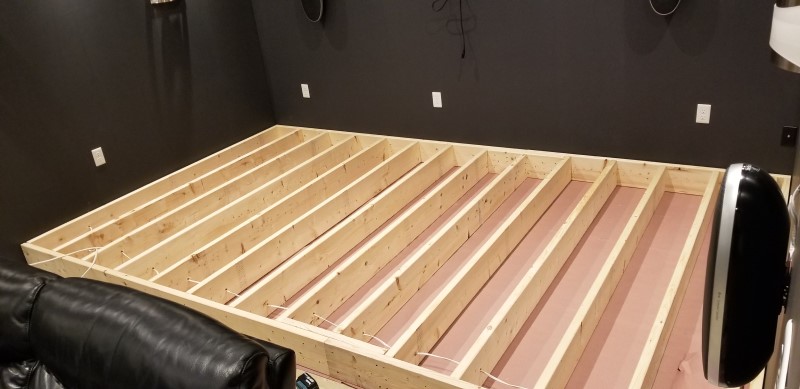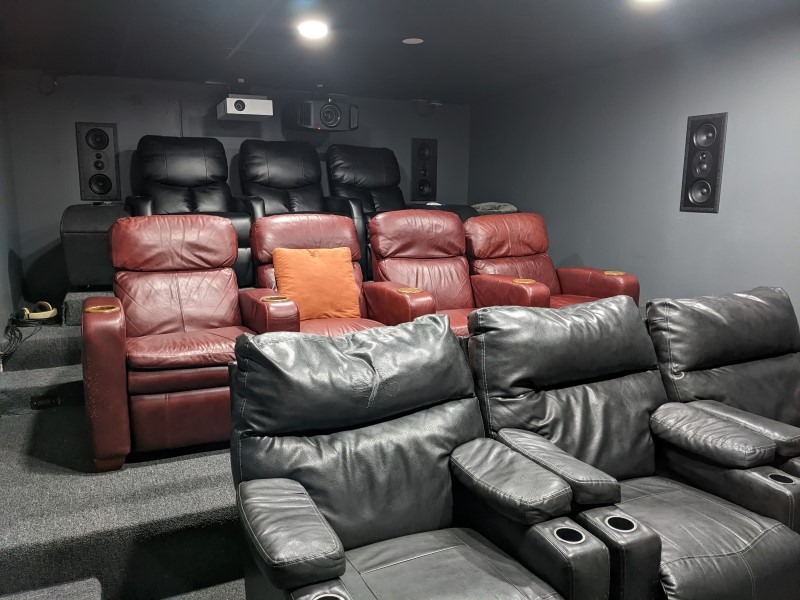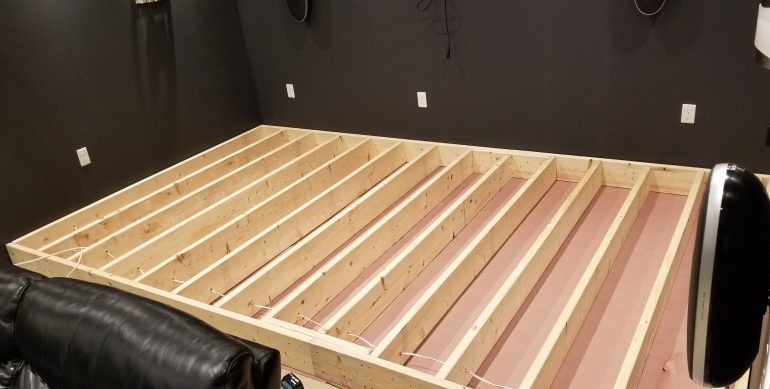Should I Add Insulation To My Riser Platform
Not everyone has space for two rows of seats in their home theaters. But that doesn’t stop people from dreaming. Part of that dream is having a riser upon which to place that second row. This allows those in the back row full view of your (hopefully ginormous) screen. If you start to research a riser, you’ll find that many people suggest you add insulation to the platform. While you may never have that second row, you are curious. Should you? What’s the point? Let’s discuss!
Multiple Use Riser
The main point of a riser or a platform is to raise the second row of seats. There are two reasons to add insulation to your riser or platform. The first is to somehow absorb the sound that might enter the riser. People online claim it makes it more inert. That doesn’t really work. Insulation isn’t going to do anything to make your riser more inert. Overbuilding (more mass) will make your riser more inert.

Most of the time people are adding insulation to their riser to transform it so that it isn’t just a platform for their second row of seats, but a bass trap. We’ve talked about acoustic panels in your room. We’ve never suggested creating one under your feet. There is a reason. For your riser to act as a bass trap, you must cut holes in it so that air can pass easily into the structure. You then fill the riser platform with insulation so that it can absorb some of the sound. While this seems to make sense from a room acoustics standpoint (more acoustic panels are nearly always better than fewer), there is one big drawback. Vibrations.
When The Vibes Are Bad
Turning your riser into a bass trap will cause it to vibrate. That’s just part of the deal. This, in turn, vibrates the seats. Some people will claim that this is a feature not a flaw. You’ve created a passive tactile transducer! Now your seats shake with every bass note. Bonus?

Your platform riser won’t shake uniformly with the bass in your room. The riser will have its own resonant frequency. At that frequency (and its harmonics) the riser will vibrate more than at other frequencies. This means that your riser will (seemingly) randomly vibrate a lot and other times not vibrate at all. While it might sound neat to have your riser vibrate your seats on paper, in actuality most people find it unnatural and distracting.
What About Turning It Into A Subwoofer?
Others online will recommend turning your platform into a subwoofer. They’ll say you can install bass drivers into the riser, fill the platform with insulation, and have a hidden sub. That sounds pretty sweet for a lot of reasons. Not only will you have one less big black box in your room, but you’ll be combining costs. You have to build the riser, you might as well turn it into a sub. The driver and amp won’t cost that much more. Is this a win?
Again, no.

Let’s forget that just slapping a driver in a box does not a good subwoofer make. Let’s pretend you can create a great DIY subwoofer. If that platform vibrates at all, it will pass those vibrations into your seats. While this might sound like a better solution than the passive vibrations, it isn’t. See, your subwoofer will still need to be EQ’ed to sound good in your room. The EQ that will be applied will make the vibrations non-linear. This means that they will be stronger at some points and weaker at others. This is why we always recommend that your tactile transducers be sent a signal that hasn’t had any EQ applied.
Plus, let’s be honest. Most of us don’t know how to design a good subwoofer much less one that doubles as a riser. You were just going to slap a couple of drivers in that platform and hope for the best.
I Guess You Think Adding Tactile Transducers is a Bad Idea Too?
Actually, no. If you want your platform to vibrate, either follow our guide for adding tactile transducers or get one of the newer Denon/Marantz receivers that have a subwoofer output that can be set for tactile transducers. You’ll still have to overbuild the platform riser (no insulation needed) so that your subwoofers don’t shake it. You only want the tactile transducers to provide the vibrations.


